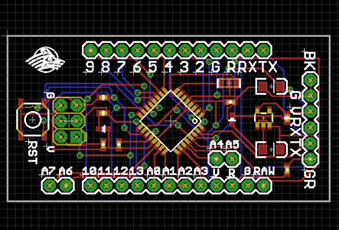When you can't be there: Cheap, solar-powered sensors to monitor remote Alaska infrastructure
by Kathleen McCoy |

Solar-powered sensors already exist, but are expensive and lack the capabilities of a new monitoring device that electrical engineering professor John Lund is now designing.
His wireless device would likely be used along remote roads in Alaska, keeping an eye on culverts, telephone poles, bridges and other essential infrastructure. The sensor could be programmed to measure a feature like light, lean or orientation-some indicator of change-and constantly transmit that data whenever the device has the solar power to do so, which would be about every 30 seconds.
Lund won an INNOVATE award in December 2011 to design and create the sensors over the next six months. He intends to pursue a patent and publish in a peer-reviewed journal.
The cool part of Lund's design is that because these devices have FRAM, or special memory qualities, each sensoring device receives and stores all data from every other device in its same network; if one fails, every other monitor in the system contains all the data for the entire network.
Imagine an Alaska state vehicle (State Troopers or DOT trucks) or even commercial truckers traveling remote main roads across the state. A sensor on that vehicle would be capable of scooping up vast amounts of data as it travels along. Transmitting devices attached to telephone poles, for example, would be capable of sending information across at least one kilometer.
Learn more about Lund's research.
 "When you can't be there: Cheap, solar-powered sensors to monitor remote Alaska infrastructure" is licensed under a Creative Commons Attribution-NonCommercial 4.0 International License.
"When you can't be there: Cheap, solar-powered sensors to monitor remote Alaska infrastructure" is licensed under a Creative Commons Attribution-NonCommercial 4.0 International License.









